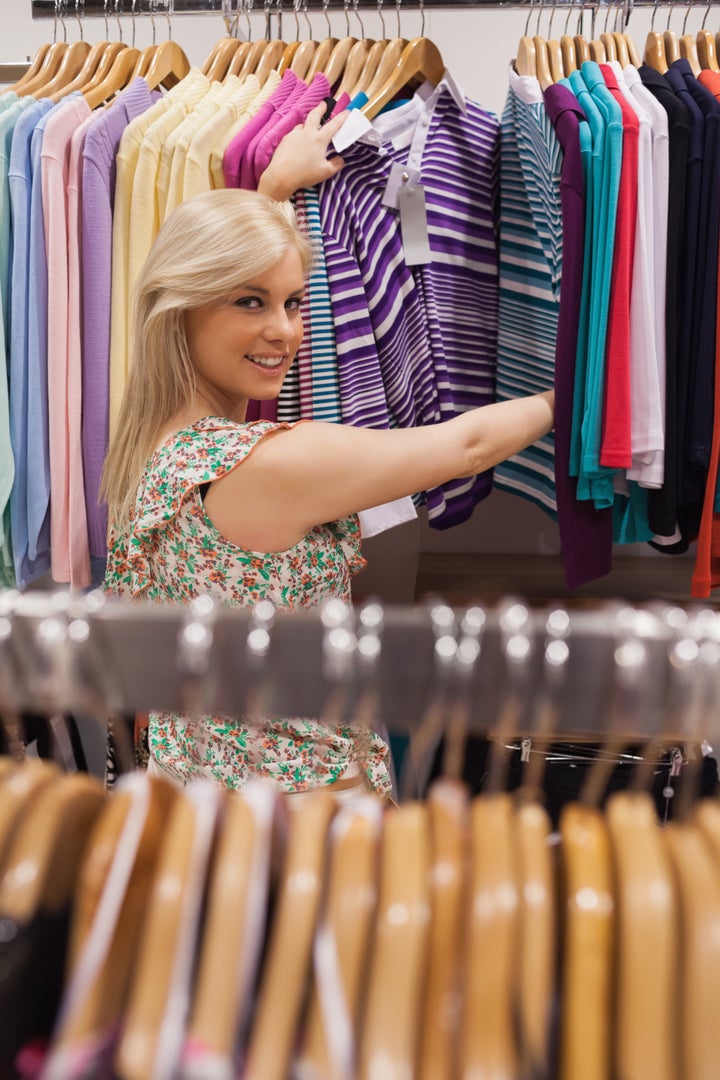
You may have heard about the impact the manufacturing of clothing has on the environment.
You can tell next season's hot color by looking at the rivers in Mexico and China, where global fashion brands use hazardous chemicals and dyes to make clothes. According to GreenChoices.org, "Nylon manufacture creates nitrous oxide, a greenhouse gas 310 times more potent than carbon dioxide."
Cotton accounts for 16 percent of the world's insecticides -- more than any other single crop -- and 99 percent of cotton production takes place in the developing world. Six of the seven insecticides used in cotton production are classified as hazardous by the World Health Organization, including Aldicarb, which can kill a man with just one drop absorbed through the skin, yet it is still used in the U.S., where 16 states have reported it in their groundwater.
Synthetic fertilizers contribute to global warming; they are 300 times more potent than carbon dioxide as greenhouse gas. It takes 1/3 of a pound of fertilizer to make one pound of cotton, and one pound of cotton to make one t-shirt. (In contrast, organic farming methods use natural fertilizers, like compost and animal manure, which naturally recycles the nitrogen already in the soil to reduce both pollution and nitrous oxide emissions. But I digress.)
Million Dollar Question
Today, the average American currently dumps 70 pounds of textile waste in the landfill each year, much of it chic-and-cheap trends dubbed "disposable fashion."
Shifting to a more sustainable mindset when it comes to your closet can help change all that. Add another question to those that we women usually ask ourselves before purchasing, i.e. "Do I like it?" "Can I afford it?" and "Does it look good on me?" (Or, the converse, "Does this make me look fat?")
The fourth question: "Is it sustainable?"
The United Nations defined "sustainable" in 1987 as "meeting the needs of the present, without undermining the needs of future generations." But when it comes to your closet, sustainability can mean different things to different people.
Sustainable Fashion, Defined
Organic simply means something comes from formerly living -- i.e., plant or animal -- material. (Think oil. Organic, yes. USDA certified organic, no.) USDA Certified Organic means a product -- be it food, makeup or clothing -- contains at least 95 percent organically grown materials.
Fair trade is the business practice of sustainably manufacturing goods in economically disadvantaged areas in order to alleviate poverty and reduce inequality. These projects now help 1.2 million workers and their families in 70 countries.
Vegan products contain no animal materials, like leather, wool, down, fur or silk (except, for some people, ahimsa or "peace" silk). But they aren't organic or fair trade, necessarily -- even those from Stella McCartney.
Recycled means using something again -- as in the case of thrift shopping or swapping, my two favorite ways to upgrade a closet -- and upcycling converts waste into something of higher value. (One great example? Transforming waste plastic bags into fabric.)
When it comes to figuring out what went into making your clothes, a little bit of research goes a long way. For example, Greenpeace's Detox campaign pressured Zara, Esprit, Levis and Benetton, among others, to publicly commit to a phase out of toxic manufacturing. H&M is now the world's largest purchaser of organic cotton, and has made public their goal of phasing out all non-sustainable cotton by 2020.
Pop Some Tags
The best way to green your closet is to avoid buying new; instead, try thrifting or swapping to recycle and upcycle clothes. These trends can upgrade your closet -- and save you money.
When you're thrifting or swapping, remember to look for natural fibers, check clothes thoroughly, and always, always wash before wearing.
Can't find a swap in your hood? Start one! Set a date, time and location, then invite your friends, and your friends friends. Decide on a system to value the clothes -- one for one, points or a percentage of retail value -- and record the value of what comes in. Let your guests swap for clothes of equal value and donate the remainder to charity. It's that simple!
Ditch Disposables, Embrace Sustainables
Regardless of whether you're at a mall, thrift store or swap, BYOB, baby! Globally, four trillion plastic bags get tossed each year, and the best way to reduce that number is to not take one in the first place.
Finally, just say no to disposable fashion made from cheap and unsustainable fabrics, and think about creating a long-term relationship with your closet.
Avoid hook-ups and one-night-stands -- think about clothing purchases as things that you want to live with for a long, long time. That doesn't mean wearing things that are out of style. It simply means being more conscious of what we buy -- and working with what we've got.